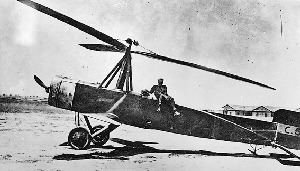Founded 24 March 1926 | ||
 | ||
Founders | ||
The Cierva Autogiro Company was a British firm established in 1926 to develop the autogyro. The company was set up to further the designs of Juan de la Cierva, a Spanish engineer and pilot, with the financial backing of James George Weir, a Scottish industrialist and aviator.
Contents
History
Cierva's first British-built autogyro was the C.8 design. It and some other designs were built in conjunction with Avro. The pre-war Cierva C.30 proved popular. Nearly 150 were built under licence in the UK (Avro), Germany (Focke-Wulf) and France (Lioré-et-Olivier).
In 1936, Cierva was killed in the Croydon KLM airliner accident when the aircraft in which he was a passenger crashed after taking off in fog. From 1936 to 1939 James Allan Jamieson Bennett was Chief Technical Officer of the company. Dr. Bennett carried through with Cierva's intention to offer the Royal Navy a gyrodyne, which Cierva had argued would be simpler, more reliable and efficient than the proposed helicopter. Bennett's design, the C.41, was tendered to the Air Ministry (Specification S.22/38) but preliminary work was abandoned with the outbreak of World War II. Bennett joined Fairey Aviation in 1945, where he led the development of the Fairey FB-1 Gyrodyne.
In 1943 the Aircraft Department of G & J Weir Ltd. was reconstituted as the Cierva Autogiro Company to develop helicopter designs for the Air Ministry. The post-war Cierva Air Horse was at the time (1948) the world's largest helicopter. The first prototype of the Air Horse crashed killing Alan Marsh, Cierva's manager and Chief Test Pilot John "Jeep" Cable, Ministry of Supply Chief Helicopter Test Pilot, and J. K. Unsworth the Flight Engineer. This led Weir to cease further investment in the company and its development contracts were transferred to Saunders-Roe.
